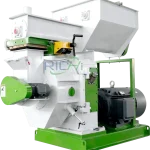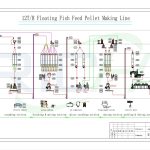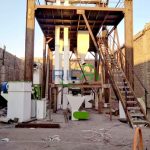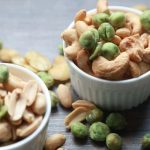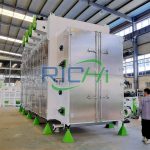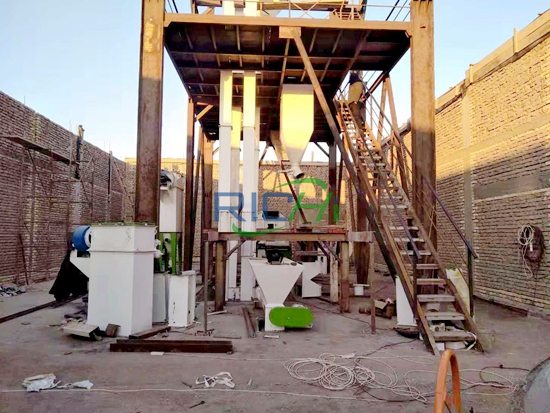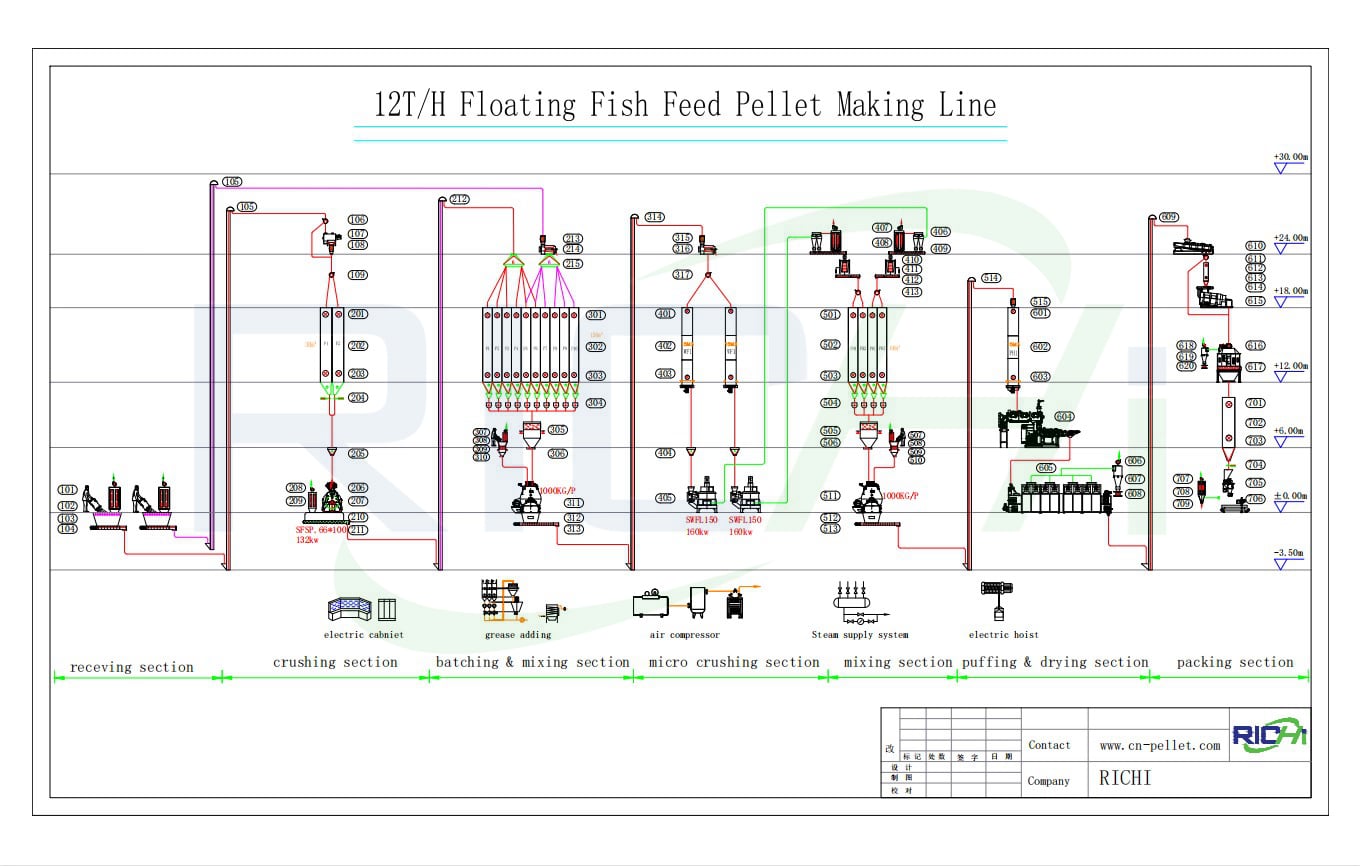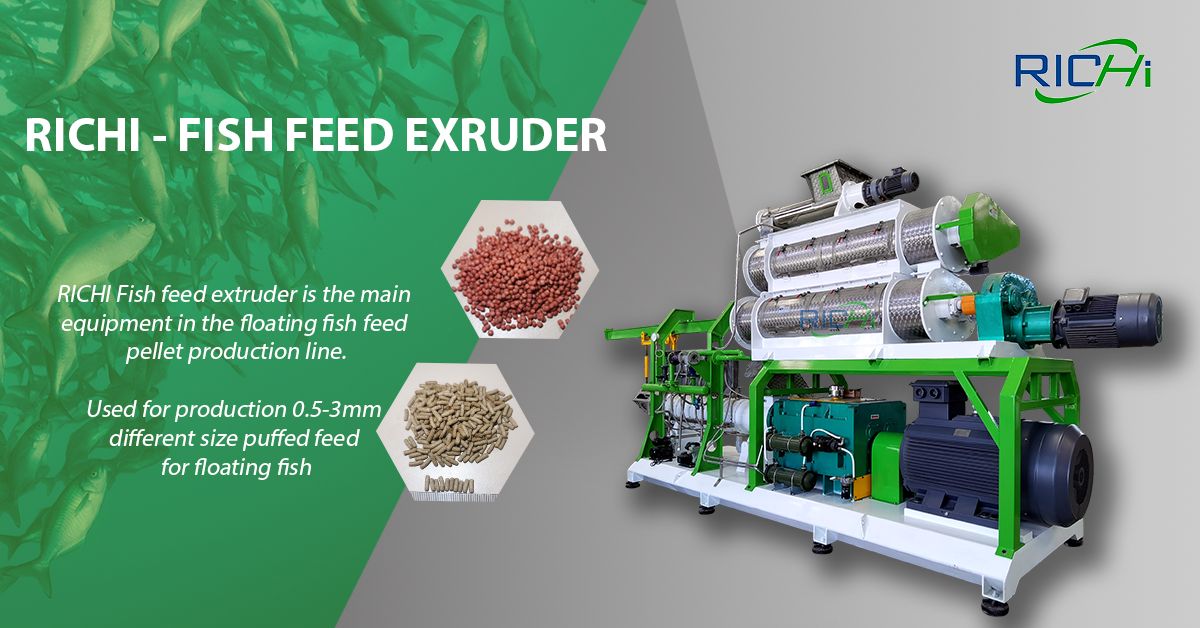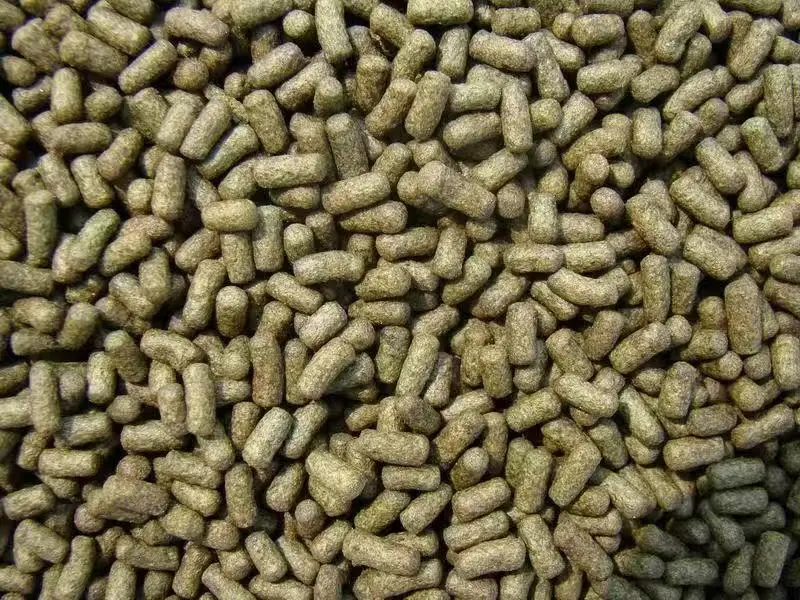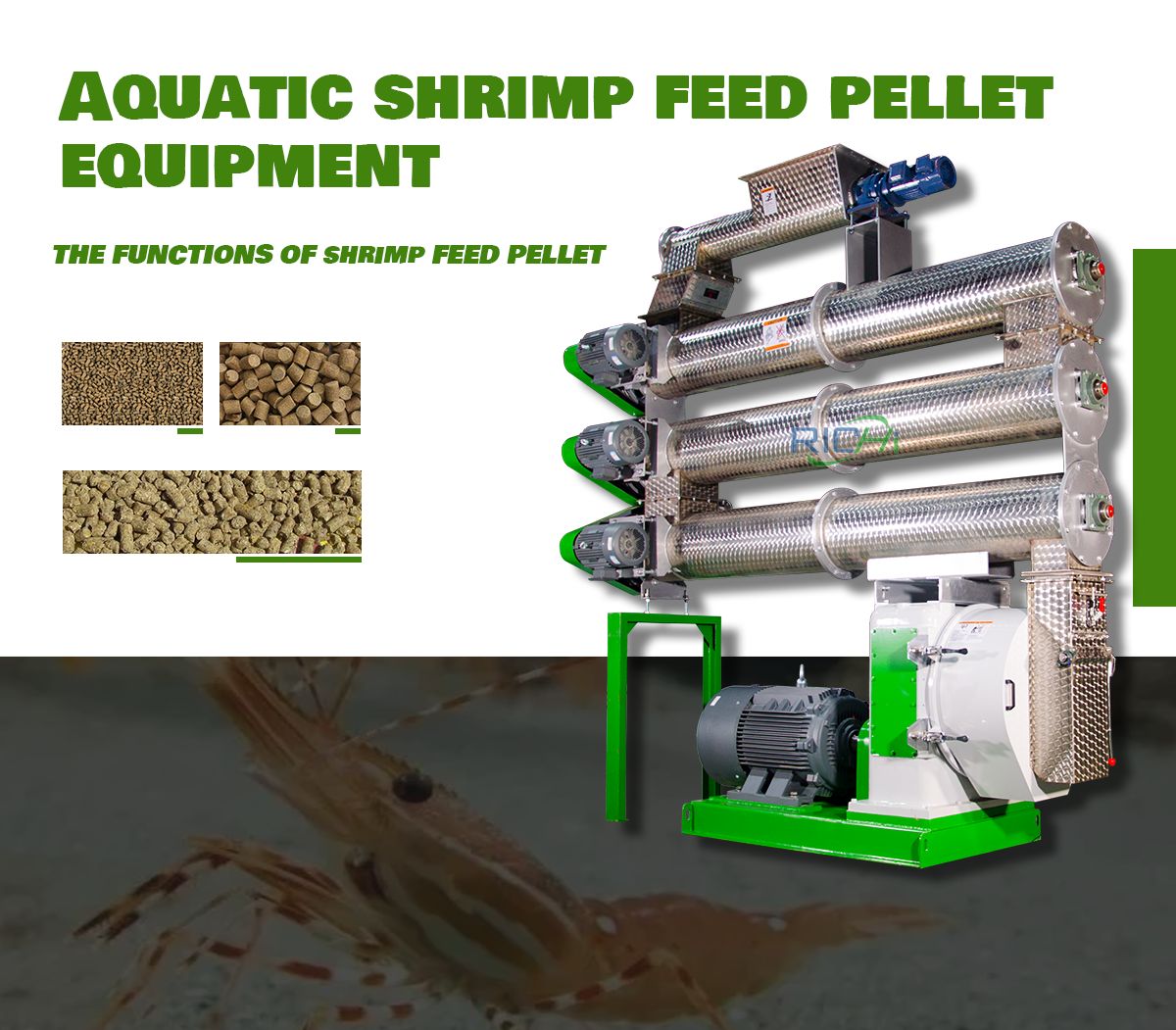In the rapidly expanding field of aquaculture, the quality and consistency of fish feed are critical factors that directly influence the growth, health, and overall productivity of aquatic species. As global demand for fish and seafood continues to rise, the need for efficient, reliable, and high-performance fish food manufacturing technologies has become more pressing than ever. The floating fish food making machine is an innovative solution that addresses these needs, offering aquaculture producers a way to produce superior feed that meets the dietary requirements of various fish species. This article delves into the importance of floating fish feed, the role of advanced machinery in its production, and the benefits of using a reliable floating fish food making machine. Related: fish feed equipment
The Importance of Floating Fish Feed in Aquaculture
Floating fish feed has become the preferred choice in modern aquaculture due to its numerous benefits over sinking feed. The quality of fish feed directly impacts the growth rate, health, and survival of fish, making it a crucial component in aquaculture management.
1. Improved Feed Efficiency
Floating fish feed is designed to float on the water’s surface for an extended period, allowing fish to consume it at their own pace. This characteristic minimizes feed wastage, as uneaten feed can be easily removed from the water, preventing it from sinking and decomposing. The ability to monitor feed consumption also helps farmers adjust feeding practices to ensure that the fish receive the appropriate amount of nutrition, which in turn improves the feed conversion ratio (FCR) and reduces feed costs.
2. Enhanced Water Quality Management
Maintaining water quality is essential for the health and productivity of aquaculture operations. Floating feed helps in this regard by reducing the amount of uneaten feed that sinks to the bottom of the tank or pond, where it can decompose and contribute to water pollution. Decomposing organic matter in water bodies can lead to increased levels of ammonia and other harmful substances, which can negatively affect fish health and growth. By using floating feed, aquaculture farmers can better manage water quality and reduce the risk of disease outbreaks.
3. Better Monitoring of Fish Health
Floating feed allows for easier monitoring of fish behavior and health during feeding. Since the feed remains on the surface, farmers can observe how the fish are feeding, identify any issues with appetite or health, and make timely adjustments to their management practices. This is particularly important in intensive aquaculture systems, where early detection of health problems can prevent significant losses.
4. Suitability for Various Fish Species
Floating fish feed is versatile and can be formulated to meet the specific nutritional needs of different fish species. Whether it’s carnivorous, herbivorous, or omnivorous species, floating feed can be tailored to provide the right balance of proteins, fats, vitamins, and minerals necessary for optimal growth and health. This adaptability makes floating feed a popular choice across various types of aquaculture, from freshwater to marine environments.
The Role of the Floating Fish Food Making Machine
The production of high-quality floating fish feed is a complex process that requires precise control over various parameters to ensure consistency, nutritional value, and buoyancy. This is where the floating fish food making machine plays a critical role. These machines are engineered to produce feed pellets that meet the stringent requirements of modern aquaculture, ensuring that the final product is of superior quality.
1. Advanced Extrusion Technology
The core of the floating fish food making machine lies in its extrusion technology. Extrusion is a process that involves forcing the feed mixture through a die under high pressure and temperature, which shapes the feed into pellets. During this process, the feed mixture undergoes significant physical and chemical changes that contribute to the final product’s quality.
- Pellet Size and Shape: The extrusion process allows for precise control over the size and shape of the pellets, which is crucial for ensuring that the feed is suitable for different fish species. Pellets can be produced in various sizes to accommodate the dietary needs of fish at different life stages, from fry to adult fish.
- Buoyancy Control: One of the key advantages of extrusion technology is its ability to produce floating feed. The high temperature and pressure during extrusion cause the feed mixture to expand and become porous, which makes the pellets less dense and able to float on water. The machine can be adjusted to produce feed with varying degrees of buoyancy, depending on the specific requirements of the aquaculture operation.
- Nutrient Retention: The extrusion process also helps in retaining the nutritional content of the feed. The controlled cooking process ensures that the essential nutrients, such as proteins, vitamins, and minerals, are preserved, making the feed more nutritious and beneficial for fish growth.
2. Automated and User-Friendly Operation
Modern floating fish food making machines are designed with automation in mind, making them easier to operate and maintain. Automated systems allow for precise control over the production process, ensuring consistent quality and reducing the likelihood of human error. Key features of these machines include:
- Programmable Logic Controllers (PLCs): PLCs enable operators to set and monitor various parameters, such as temperature, pressure, and moisture content, throughout the production process. This level of control ensures that the feed is produced to the exact specifications required for optimal fish health and growth.
- Continuous Production: Automated machines can operate continuously, allowing for high production rates without compromising feed quality. This is particularly important for large-scale aquaculture operations that require a steady supply of feed.
- Easy Maintenance and Cleaning: The design of the machine typically includes features that make maintenance and cleaning straightforward, reducing downtime and ensuring that the machine remains in good working condition over time.
3. Energy Efficiency
Energy efficiency is a critical consideration in the design of modern floating fish food making machines. These machines are engineered to minimize energy consumption while maximizing output, making them cost-effective and environmentally friendly. Features such as energy-efficient motors, optimized heating systems, and advanced insulation contribute to lower energy usage during the production process.
4. Customizable Feed Formulations
The floating fish food making machine allows for the production of feed with customized formulations tailored to the specific nutritional needs of different fish species. The flexibility in ingredient selection and processing parameters enables producers to create feed that meets the exact requirements of their aquaculture operation. This customization is particularly important in species-specific aquaculture, where the dietary needs of the fish can vary significantly.
Benefits of Using a Reliable Floating Fish Food Making Machine
Investing in a reliable floating fish food making machine offers numerous benefits to aquaculture producers, ranging from improved feed quality to enhanced operational efficiency.
1. Consistent Feed Quality
Reliability in a floating fish food making machine translates to consistent feed quality, which is essential for maintaining the health and growth of fish. A reliable machine ensures that each batch of feed is produced to the same high standards, with uniform pellet size, shape, and nutritional content. Consistency in feed quality leads to more predictable growth rates and better overall fish health, which can significantly improve the productivity and profitability of an aquaculture operation.
2. Cost Savings
While the initial investment in a high-quality floating fish food making machine may be significant, the long-term cost savings can be substantial. Reliable machines are designed to operate efficiently, reducing energy and raw material consumption. Additionally, the durability and low maintenance requirements of these machines minimize downtime and repair costs, further contributing to cost savings.
3. Increased Production Capacity
A reliable floating fish food making machine is capable of operating at high production rates, enabling aquaculture producers to meet the growing demand for fish feed. The ability to produce large quantities of feed quickly and efficiently is particularly important for large-scale operations, where maintaining a consistent supply of feed is critical to the success of the business.
4. Enhanced Feed Safety
Food safety is a top priority in aquaculture, and reliable floating fish food making machines are designed to meet stringent safety standards. The use of high-quality materials and advanced manufacturing processes ensures that the feed produced is free from contaminants and safe for consumption by fish. Additionally, the precision control over the production process reduces the risk of contamination, ensuring that the final product is safe and healthy for the fish.
5. Environmental Sustainability
Sustainability is a key consideration in modern aquaculture, and the use of a reliable floating fish food making machine contributes to environmental sustainability in several ways:
- Reduced Waste: The ability to produce feed with a high degree of consistency and quality reduces waste, both in terms of raw materials and uneaten feed. This waste reduction contributes to a more sustainable aquaculture operation.
- Energy Efficiency: As previously mentioned, energy-efficient machines reduce the overall environmental footprint of the feed production process. Lower energy consumption translates to reduced greenhouse gas emissions and a smaller carbon footprint.
- Resource Optimization: The machine’s ability to utilize a wide range of ingredients, including by-products and alternative protein sources, supports the sustainable use of resources. By incorporating these ingredients into the feed, producers can reduce their reliance on traditional feed ingredients, such as fishmeal and soybean meal, which are associated with environmental concerns.
Future Trends in Floating Fish Feed Production
The field of floating fish feed production is rapidly evolving as the aquaculture industry seeks to address growing demands for efficiency, sustainability, and nutritional excellence. Innovations and emerging technologies are shaping the future of fish feed production, driving improvements in feed quality, operational efficiency, and environmental impact. Here are some key trends that are expected to influence the future of floating fish feed production:
1. Integration of Smart Technology and IoT
The Internet of Things (IoT) and smart technology are set to revolutionize floating fish feed production by enabling real-time monitoring and control of the manufacturing process. IoT-enabled machines will collect and analyze data from various stages of production, including ingredient quality, pellet size, and energy consumption. This data-driven approach allows for more precise control and optimization of the feed production process.
- Real-Time Monitoring: Sensors and smart devices will provide real-time feedback on feed quality and production efficiency. This will enable operators to make immediate adjustments, ensuring consistent pellet quality and reducing waste.
- Remote Diagnostics and Control: IoT integration will facilitate remote monitoring and diagnostics, allowing for quicker identification and resolution of issues. Operators can manage and control the production process from any location, improving operational flexibility and reducing downtime.
2. Sustainable Ingredient Sourcing
As environmental concerns become more pressing, the aquaculture industry is increasingly focused on sourcing sustainable ingredients for fish feed. The future of floating fish feed production will see a shift towards incorporating alternative protein sources and sustainable raw materials.
- Alternative Proteins: Ingredients such as insect meal, algae, and single-cell proteins are gaining traction as viable alternatives to traditional fishmeal and soybean meal. These sources offer lower environmental impacts and can be produced more sustainably.
- Circular Economy Practices: The integration of by-products and waste materials from other industries into fish feed formulations supports circular economy principles. This approach reduces reliance on primary resources and minimizes waste.
3. Advancements in Nutritional Formulation
The quest for optimal fish health and growth will drive innovations in feed formulation. Future trends in floating fish feed production will focus on developing specialized feed formulations that cater to the specific needs of different fish species and life stages.
- Precision Nutrition: Advances in nutritional science will enable the creation of highly tailored feed formulations that address specific health issues or performance goals. This precision nutrition approach enhances feed efficiency and supports better fish growth and health.
- Functional Additives: The incorporation of functional additives, such as probiotics, prebiotics, and vitamins, will become more prevalent. These additives can improve fish immunity, digestion, and overall health, contributing to better feed performance.
4. Enhanced Energy Efficiency
Energy efficiency will continue to be a major focus in the design and operation of floating fish feed making machines. Innovations aimed at reducing energy consumption will play a crucial role in making feed production more sustainable and cost-effective.
- Energy Recovery Systems: Advanced energy recovery systems will capture and reuse heat generated during the extrusion process, reducing overall energy consumption. This approach not only lowers operational costs but also minimizes the environmental impact of feed production.
- Optimized Process Controls: Improvements in process controls and automation will enhance the energy efficiency of feed production. Technologies that optimize temperature, pressure, and ingredient mixing will contribute to more efficient operations.
5. Increased Automation and Process Optimization
Automation and process optimization will drive the next generation of floating fish feed production. The use of advanced control systems and automation technologies will streamline production, reduce labor requirements, and improve overall efficiency.
- Automated Ingredient Handling: The automation of ingredient handling, weighing, and mixing will enhance precision and reduce human error. This will result in more consistent feed formulations and improved feed quality.
- Process Optimization: Advanced software and algorithms will enable real-time optimization of production parameters, such as extrusion conditions and pellet quality. This will lead to more efficient production processes and higher-quality feed.
6. Focus on Environmental Sustainability
Environmental sustainability will remain a key priority in the future of floating fish feed production. Efforts to reduce the environmental footprint of feed production will include measures to minimize waste, lower greenhouse gas emissions, and improve resource efficiency.
- Waste Reduction: Innovations aimed at reducing feed waste during production and consumption will contribute to a more sustainable aquaculture system. This includes improving pellet durability and reducing feed losses in the water.
- Carbon Footprint Reduction: Strategies to lower the carbon footprint of feed production, such as using renewable energy sources and optimizing energy use, will become more prevalent. These measures support the broader goals of reducing greenhouse gas emissions and mitigating climate change.
7. Development of Novel Feed Formats
The future of floating fish feed production will see the development of novel feed formats designed to meet specific needs and preferences of fish species. These formats will offer new ways to enhance feed performance and address emerging challenges in aquaculture.
- Micro-Pellets: The production of micro-pellets for small fish fry or juvenile stages will become more common. These tiny pellets provide a more appropriate size for young fish and ensure better feed intake and growth.
- Extruded Shapes and Textures: Innovations in extrusion technology will allow for the creation of feed with varied shapes and textures, catering to the feeding behaviors and preferences of different fish species.
Conclusion
The future of floating fish feed production is poised for significant advancements driven by technological innovation, sustainability, and a focus on optimal nutrition. The integration of smart technology, sustainable ingredient sourcing, and enhanced energy efficiency will shape the next generation of feed production, supporting the growing demands of the aquaculture industry while addressing environmental and operational challenges. Related: floating fish feed production line

